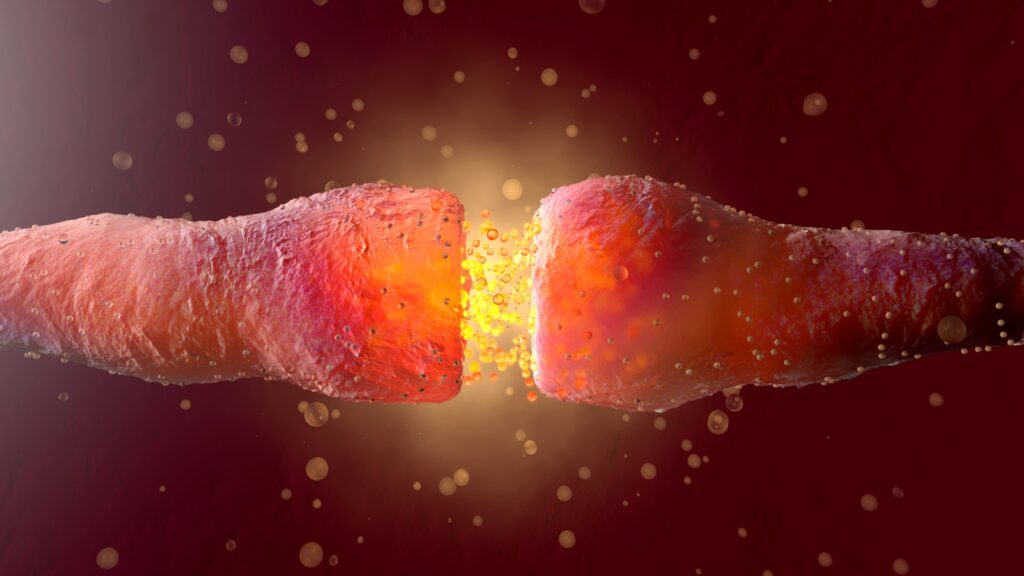A groundbreaking study has uncovered the role of a specific molecule in the brain that acts like a “glue,” helping to solidify long-term memories. This discovery sheds light on how certain memories persist for a lifetime, while others fade away.
Memories are formed when groups of neurons in the brain’s hippocampus activate in response to a specific experience. Each time you recall that experience, the same set of neurons fires up.
When one neuron repeatedly activates another, the connection between them strengthens. Over time, this process, along with activity in other brain regions, transforms short-term memories into long-term ones.
To maintain these long-term memories, brain cells produce proteins that reinforce the connections, or synapses, between neurons. One such protein is the enzyme PKMzeta, which is continuously produced by neurons.
However, a key question has remained unanswered: How does PKMzeta “know” which synapses to target to ensure certain memories endure?
In a new study published in the journal Science Advances on June 26, researchers believe they’ve found the answer. They identified a molecule called KIBRA that acts as a kind of molecular glue, binding PKMzeta to strong synapses and recruiting new PKMzeta to replace the enzyme as it naturally degrades. This process helps preserve long-term memories.
Previous research had hinted at KIBRA’s importance. Studies in humans suggested that variations in the KIBRA molecule are linked to differences in memory performance, either enhancing or impairing it.
KIBRA was also known to interact with PKMzeta in the hippocampus of mice. Building on this, the research team decided to explore the relationship between KIBRA and PKMzeta in greater detail.
In lab experiments, the scientists investigated whether disrupting the interaction between KIBRA and PKMzeta affected mice’s ability to retain long-term memories. One test involved seeing if the mice could remember to avoid an area where they had previously received an electric shock.
When the KIBRA-PKMzeta interaction was blocked, the mice’s long-term spatial memory was impaired—they struggled to remember the shock zone.
In a separate experiment, when the KIBRA-PKMzeta interaction was left undisturbed, the team observed that even as PKMzeta degraded over time, new complexes of KIBRA and PKMzeta formed in the hippocampus. This process helped the mice retain their memory of the shock zone for up to a month.
Earlier work by the same team had shown that increasing PKMzeta levels in a rodent’s brain could strengthen weak long-term memories that had faded. This finding initially surprised the researchers, as they expected PKMzeta to randomly boost synapses rather than selectively targeting those involved in long-term memory.
The new study suggests that KIBRA acts as a guide, directing PKMzeta to the right synapses and ensuring they remain strong.
While the research is still in its early stages, it opens up exciting possibilities for treating memory-related disorders, such as Alzheimer’s disease, according to study co-senior author André Fenton, a professor of neural science at New York University.
Therapies could potentially use KIBRA to deliver PKMzeta or similar molecules to weakened synapses, helping to restore memory function. However, Fenton cautions that such treatments would only be effective as long as there are still synapses left to enhance, as neurodegenerative diseases like Alzheimer’s ultimately damage and destroy neurons.
The study also highlights how much remains to be understood about the complex interplay between molecules like PKMzeta and KIBRA and the subjective experience of memory. “We have quite a way to go to turn the description of these molecules into that experiential thing we cherish—what we call memory, belief, intention, and so forth,” Fenton said.
This research marks a significant step forward in unraveling the mysteries of memory and could pave the way for innovative treatments for memory loss in the future.


